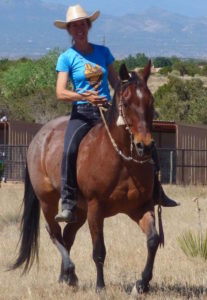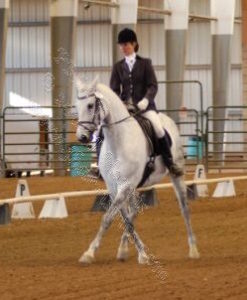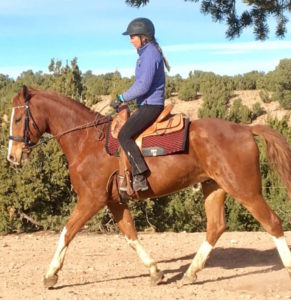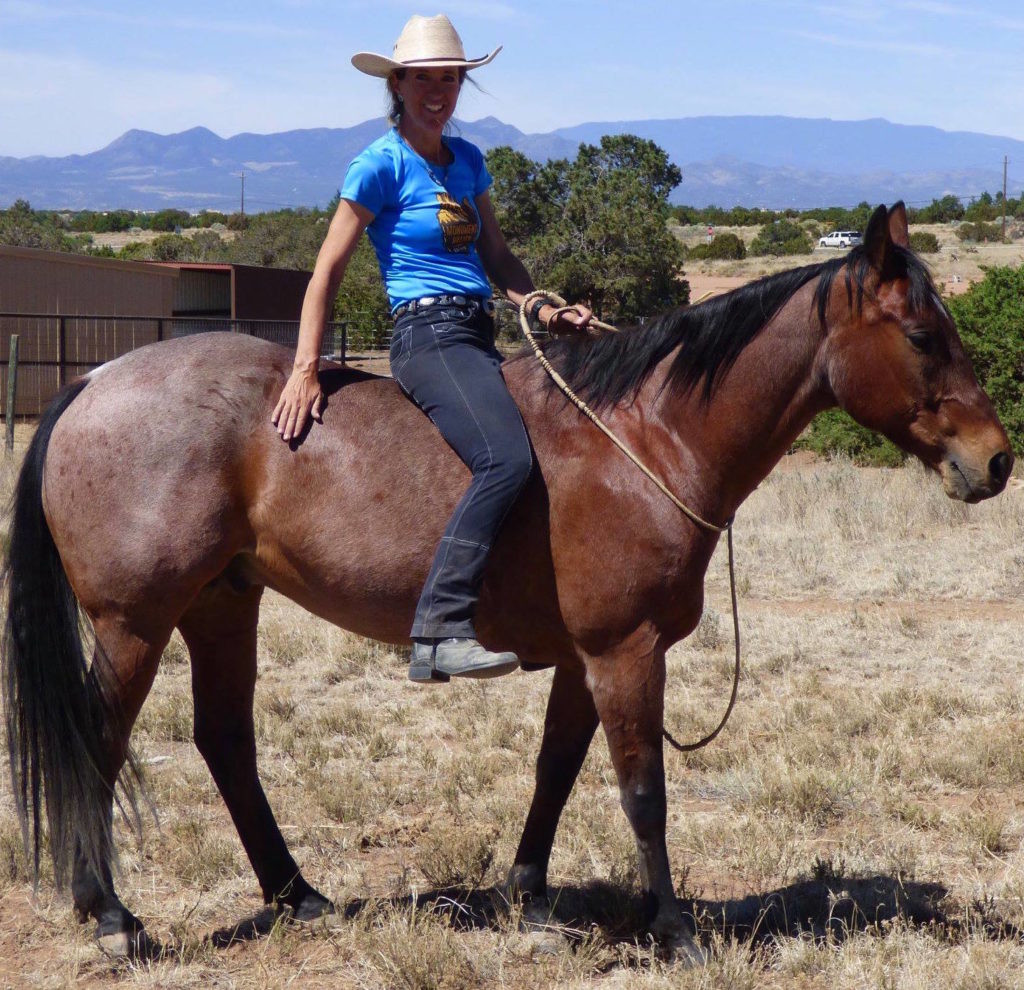 Editor’s Note: 2018 Best Horse Practices Summit presenter Katrin Silva grew up riding dressage in Germany before moving to the United States at age 19 to learn to ride Western. She’s been riding both disciplines for the last twenty years and is a regular guest columnist for Cayuse Communications. She lives in New Mexico where she works with dressage and Western clients. Visit her blog here.
Editor’s Note: 2018 Best Horse Practices Summit presenter Katrin Silva grew up riding dressage in Germany before moving to the United States at age 19 to learn to ride Western. She’s been riding both disciplines for the last twenty years and is a regular guest columnist for Cayuse Communications. She lives in New Mexico where she works with dressage and Western clients. Visit her blog here.
In this ongoing series, Katrin Silva previews elements of her Summit presentation with Amy Skinner. Read more about their exciting, informative arena presentation here.
Read Divide Ain’t Wide: How Western & Dressage riders can see eye-to-eye
Katrin Silva writes:
No matter what tack we use, all good riding has three basic ingredients:
- Seat
- Feel
- Communication
 If we want to ride better, we need to develop these areas and recognize that they’re connected to each other in all sorts of ways. A good seat makes it easier to feel what the horse is doing, and feel makes communication possible. All the different versions of a good seat have more in common than most riders think. Read more about a good seat here.
If we want to ride better, we need to develop these areas and recognize that they’re connected to each other in all sorts of ways. A good seat makes it easier to feel what the horse is doing, and feel makes communication possible. All the different versions of a good seat have more in common than most riders think. Read more about a good seat here.
A good rider will be able to adjust her seat depending on the situation, and on the horse’s stage of training. For instance, I don’t sit on a green or tense horse the same way I sit on a trained horse with well-developed back muscles. On a young horse, I sit more lightly and usually post the trot at first. Once I start sitting the trot, my back follows the horse’s back passively, interfering with the horse’s movement as little as possible.
As the horse progresses in his training, the balance gradually shifts toward the horse following what my seat suggests to his back instead of the other way around. Over the course of the horse’s education, my seat becomes my most important communication tool – much more so than hands or legs. I sit what I want the horse to do – i.e. I pretend the horse is doing what I’m asking. In a best-case scenario, the horse will do what I’m asking just from my seat suggestion. To ride like that, I need to feel what the horse is doing under me, and then give subtle signals back to the horse with my body. It’s a beautiful feeling – relaxed, effortless, and joyful.
 Developing seat and feel is definitely worth your time. Know, however, that there’s much more to this process than bringing your ear, shoulder, hip, and heel into a straight line. So, how can riders improve seat, feel, and communication? The answer is not simple and depends on whom you ask. Dressage and Western riders tend to have somewhat different views on the matter, but both ways of thinking lead in the right direction.
Developing seat and feel is definitely worth your time. Know, however, that there’s much more to this process than bringing your ear, shoulder, hip, and heel into a straight line. So, how can riders improve seat, feel, and communication? The answer is not simple and depends on whom you ask. Dressage and Western riders tend to have somewhat different views on the matter, but both ways of thinking lead in the right direction.
Seat from Dressage Perspective
The dressage tradition emphasizes a good seat from the beginning. As a child in Germany, I learned to ride on a lunge line, without reins or stirrups, until my instructor thought I could sit well enough to be turned loose. Most dressage riders – myself included – consciously work on improving their seat through lessons and clinics. Dressage instructors tend to constantly correct the rider’s position in the saddle, pointing flaws like elbows with the wrong degree of bend or toes that point in the wrong direction. Many dressage arenas have mirrors, which provide instant visual feedback.
 All this can be very helpful, but there’s a downside to focusing so much on improving one’s position in the saddle. Too much worry about conforming to that elusive ideal of correctness doesn’t allow riders to develop feel. A tense, apprehensive rider can’t be effective, even when she looks perfect from the outside.
All this can be very helpful, but there’s a downside to focusing so much on improving one’s position in the saddle. Too much worry about conforming to that elusive ideal of correctness doesn’t allow riders to develop feel. A tense, apprehensive rider can’t be effective, even when she looks perfect from the outside.
Seat from Western Perspective
Western riders tend to worry less about how “correct” their seat looks and more about how to get their job done – be it a reining pattern, or a trail ride, or cow work. In my experience, Western trainers focus less on rider position and more on seeing that the rider can get the horse to do what she is asking.
That can be a good thing. When riders aren’t constantly hearing what’s wrong with their position, they’re less self-conscious and more confident. They’re able to think less and feel more. On the other hand, all the feel in the world won’t help a rider communicate with her horse if she can’t use her seat effectively.
Here are suggestions to develop seat, feel, and communication regardless of your discipline:
- Ride as many different horses as you can. Ride trained horses, green horses, tall horses, short horses, big movers, choppy movers, hot horses, lazy horses, reining horses, endurance horses, show horses, trail horses. Ride them all, as long as they’re reasonably safe to ride. They’re your best teachers.
- Ride bareback when you have the safe opportunity. Being closer to your horse’s back will help you feel what goes on there.
- Drop your stirrups every so often. It’s much more difficult to ride crooked without them.
- Close your eyes while you’re riding for as long as you’re comfortable. It will force you to rely on your feel instead of your eyes.
- Pictures speak louder than words. Have a friend record you from the front, from the back, from both sides. If you tend to be self-critical, have a glass of wine before watching the video.
- Instruction on a regular basis is helpful, but a) make sure you choose a teacher who is positive and constructive in her feedback, and b) make sure you balance your lesson time with riding on your own, which will give you the opportunity to experiment and focus on feel.
- Finally, keep your sense of humor. Work on improving your seat, but don’t work so hard you stop enjoying horse time. Smile. When your jaw is clenched and your facial muscles are tense, that tension trickles down to the rest of your body.
Ride happy to ride better!
